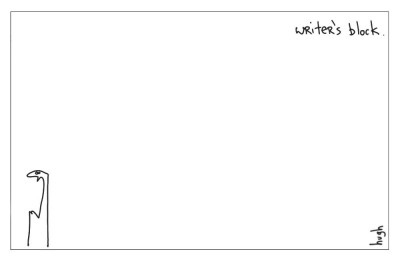What do you do when you can’t get past a sticky point in your story? You know that it’s not working quite right, but you can’t pinpoint the problem: you’re in limbo.
- Go for humor. See my Pinterest Board, Writer’s Block Humor. Please recommend something to Pin to this board in Comments!
- Write a Subplot. So, for a while, just forget the main plot and work on a subplot. I’ve heard authors say they always plan a three-chapter chase scene somewhere. It adds excitement in the crucial sagging middle, sets a time clock ticking and gets you farther down your time line so something important can happen. Other subplots might be a variation of the main plot, or some separate character issue. In my current WIP, the subplot involves a music concert and the competition between the main character and the supporting character to see which one will be the soloist. Whenever I get stuck, I switch to a practice session for the concert and see what trouble I can rustle up.
- Type the last chapter again. From memory. It’s always good to revisit a previous chapter before you start writing for the day. And sometimes, it’s good to just revisit the last chapter entirely to see where a fresh start will take you.
- Go back to the last point where you were confident in the story and start from there. If everything was going fine before your character went out of town, then go back, take out the reason for going out of town and write from there. This isn’t quite the same thing as pinpointing where things went wrong. Instead, you’re looking at the positives: where is the last place things were going well. Retreat to there and regroup.
- Let your main character write you a letter, or you write him/her a letter. Tell him/her that s/he is acting like an idiot and needs to straighten up. Let the character answer with a reason for his/her actions. Sometimes, this type of character exploration lets you understand the character better and you come back with a richer chapter.
- Consult a critique group or partner. Sometimes, just talking out a problem will help you get past the sticky point. If you regularly use a critique group or partner, now’s the time to get them involved. As usual, you aren’t asking them to solve the problem for you; rather, a good critiquer asks questions to get you to see the story in a new way. Because what you really need here is a re-envisioning of the project.

Thanks, Darcy. You don’t know how timely this was for me this morning! XO
Glad it helped!
Darcy